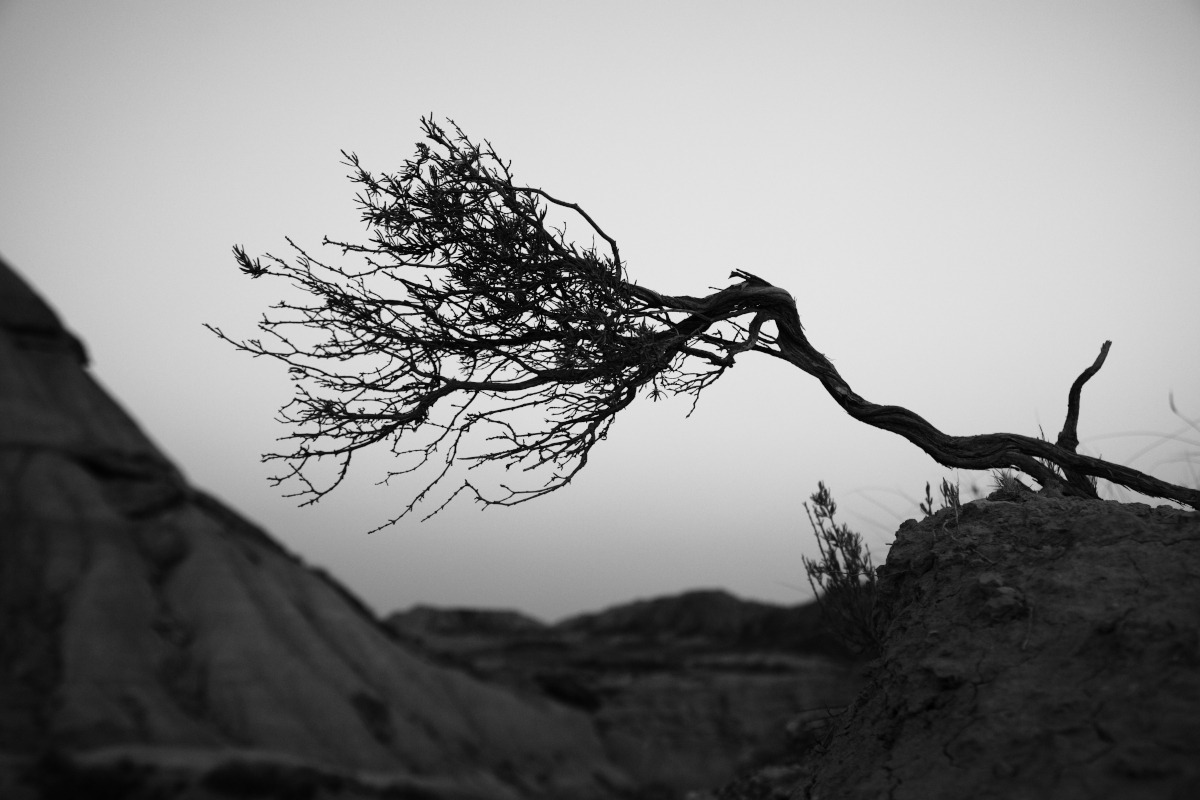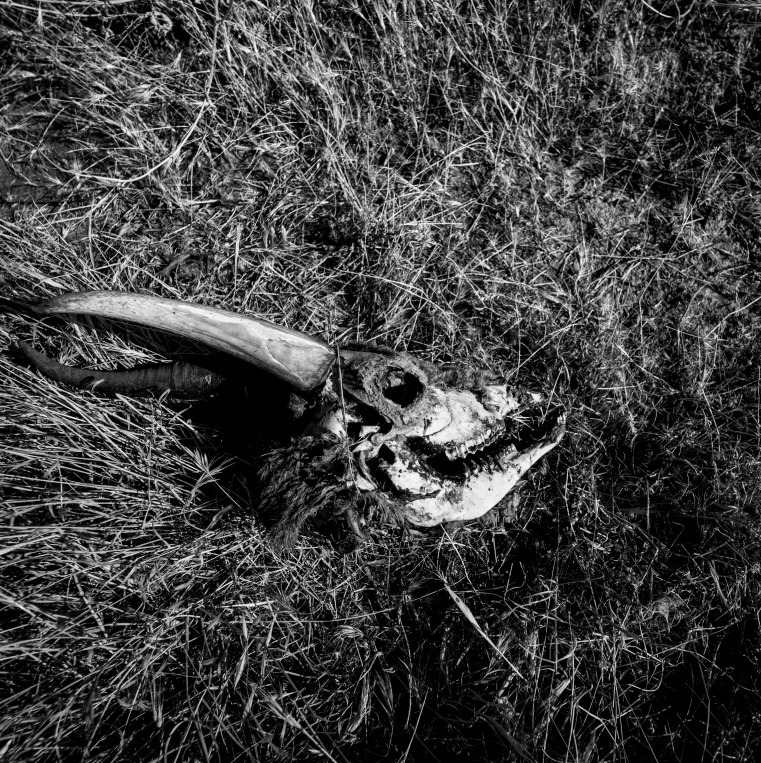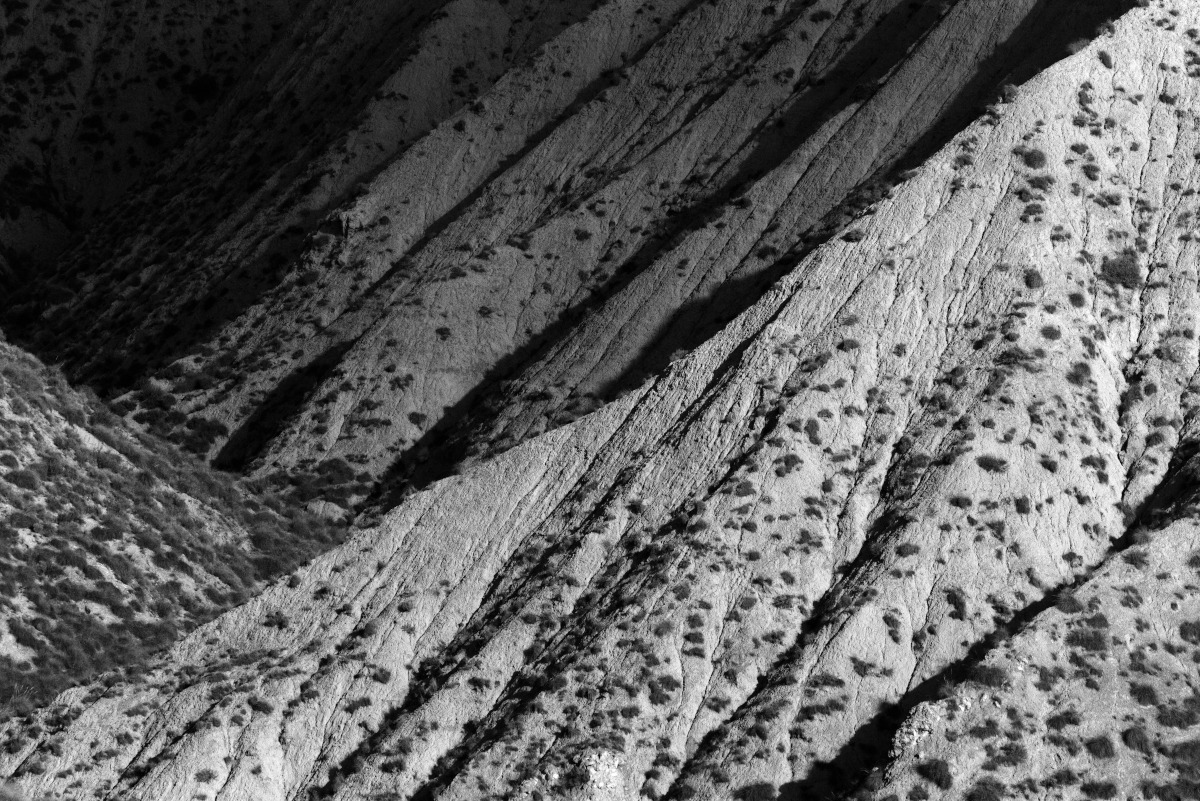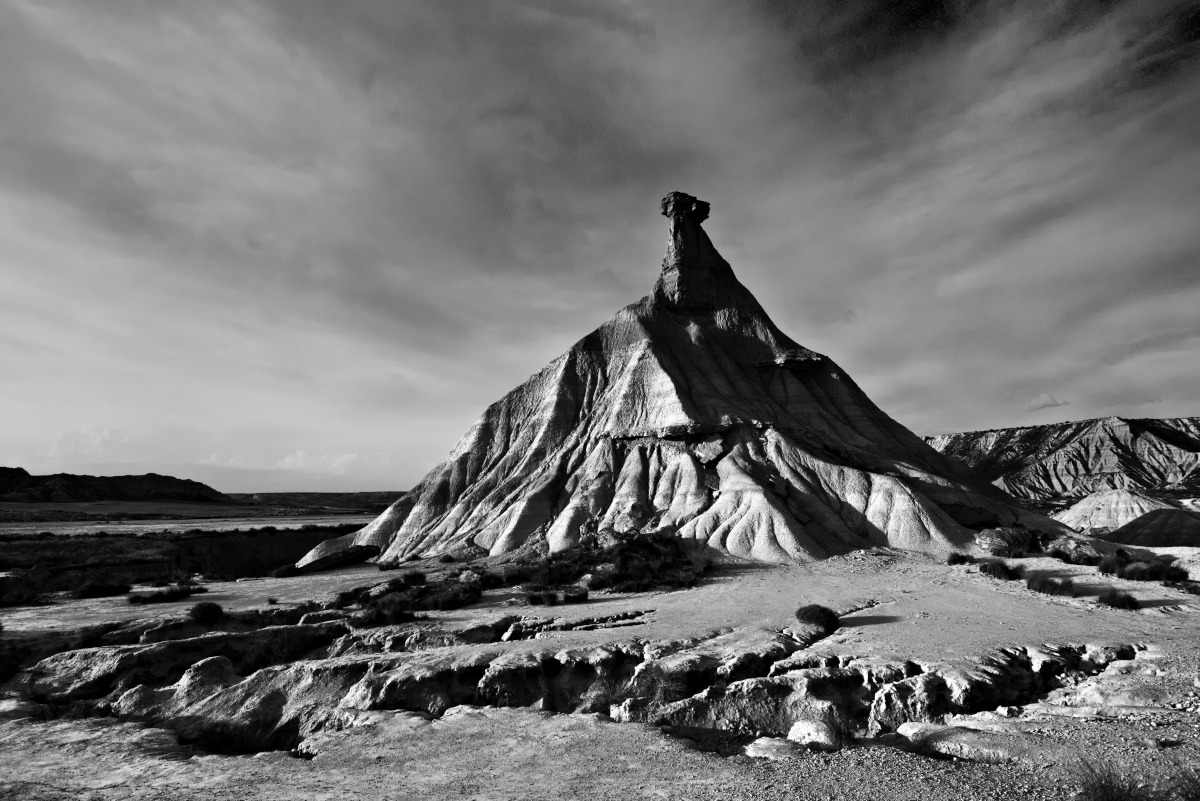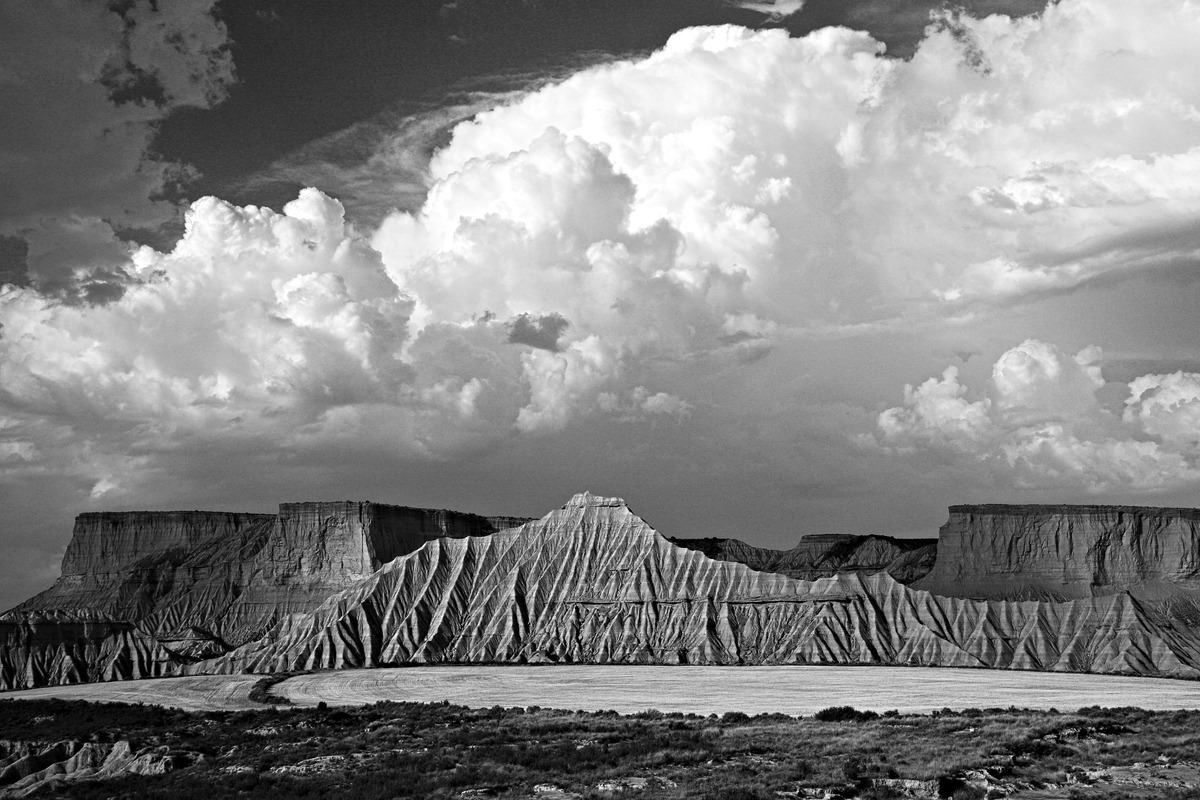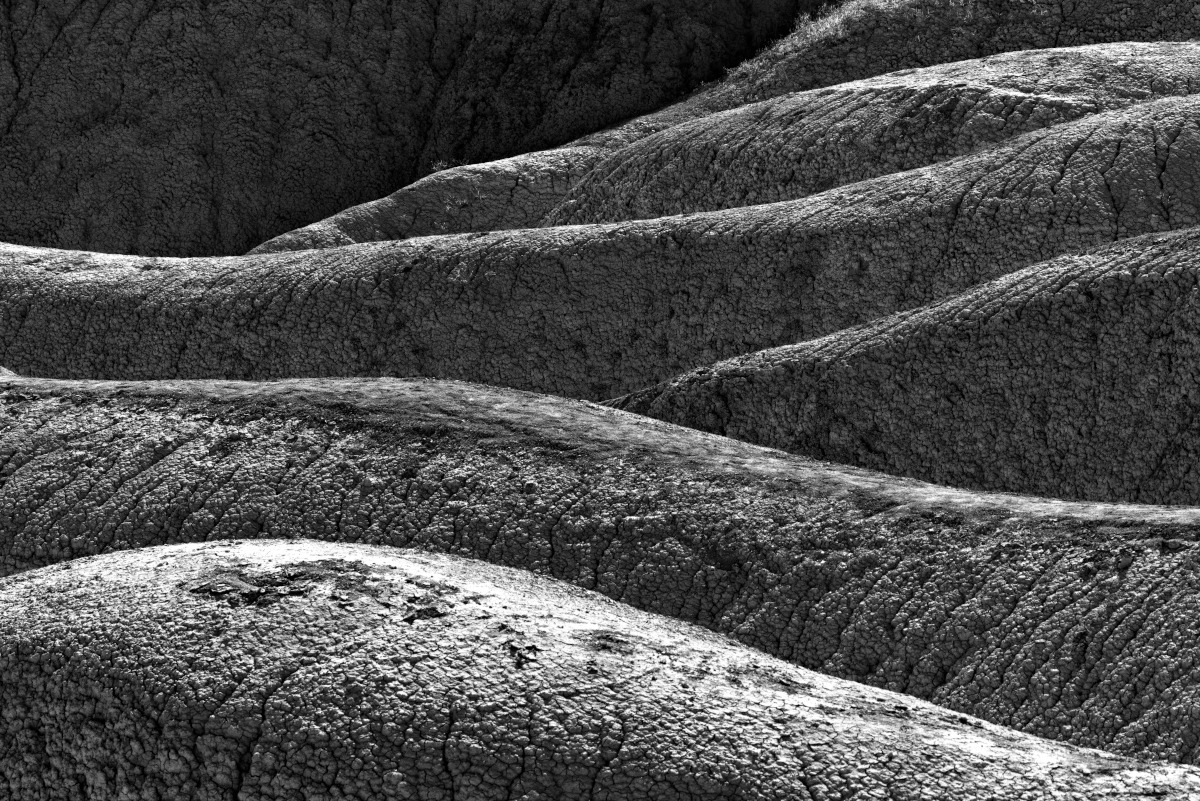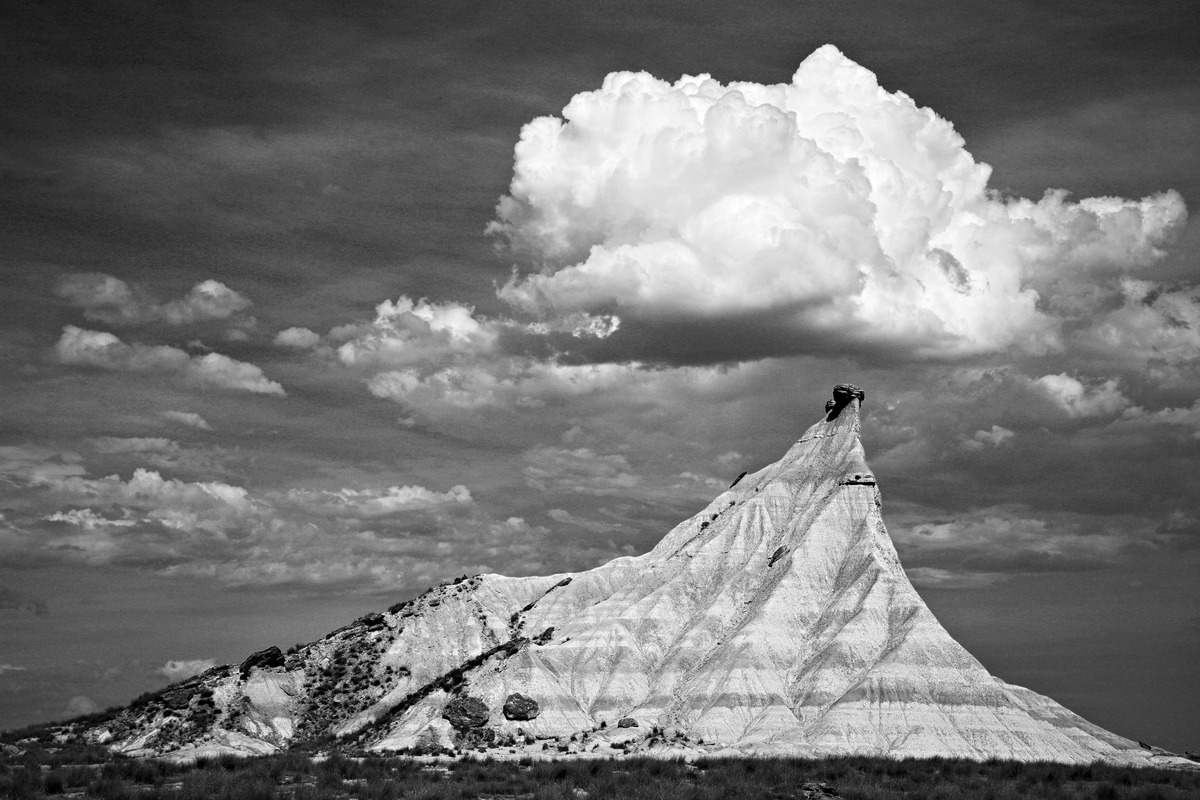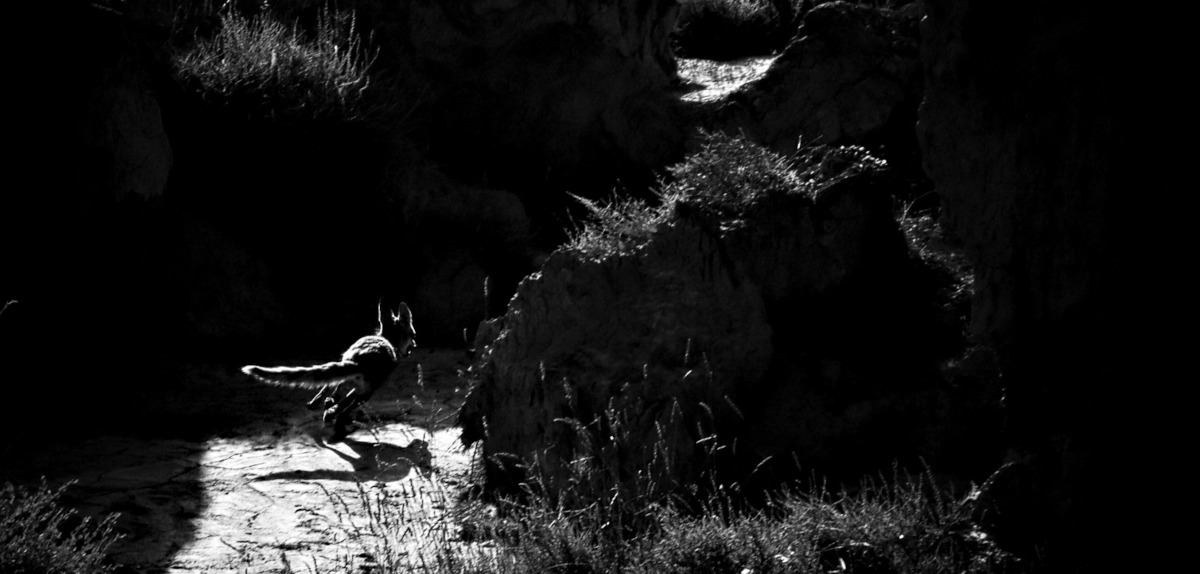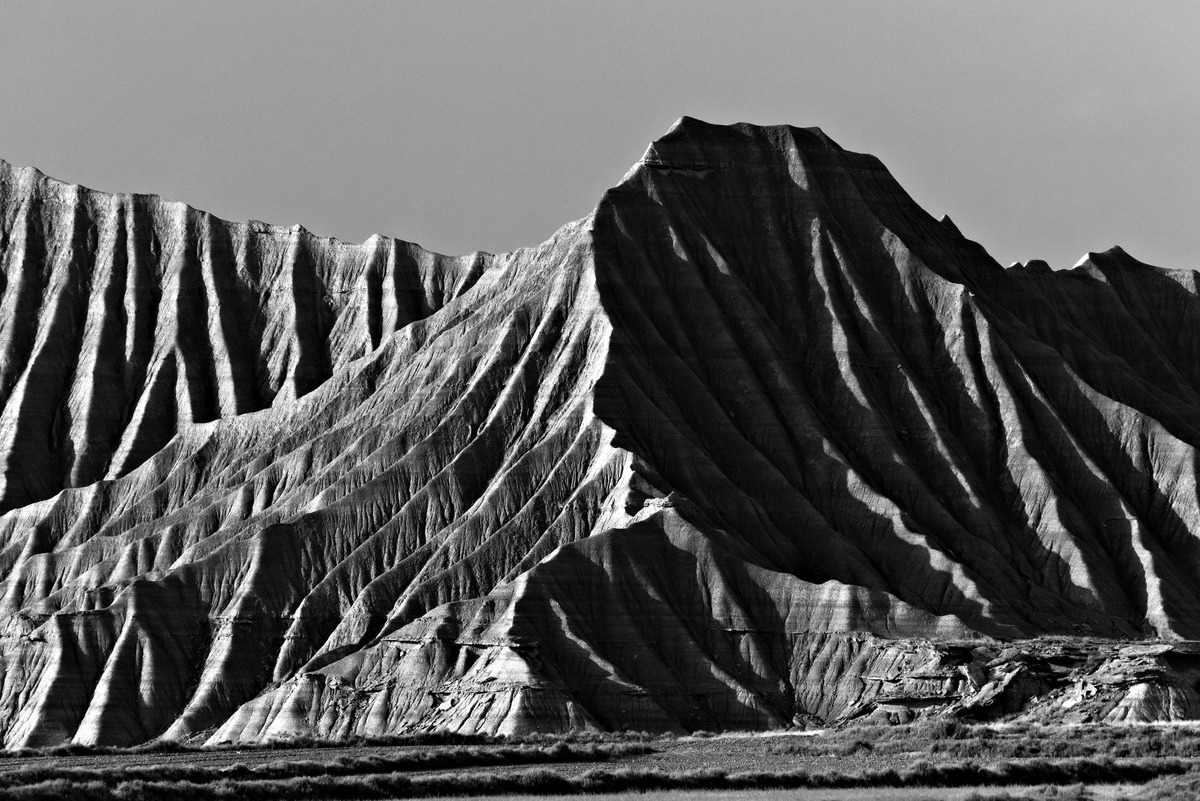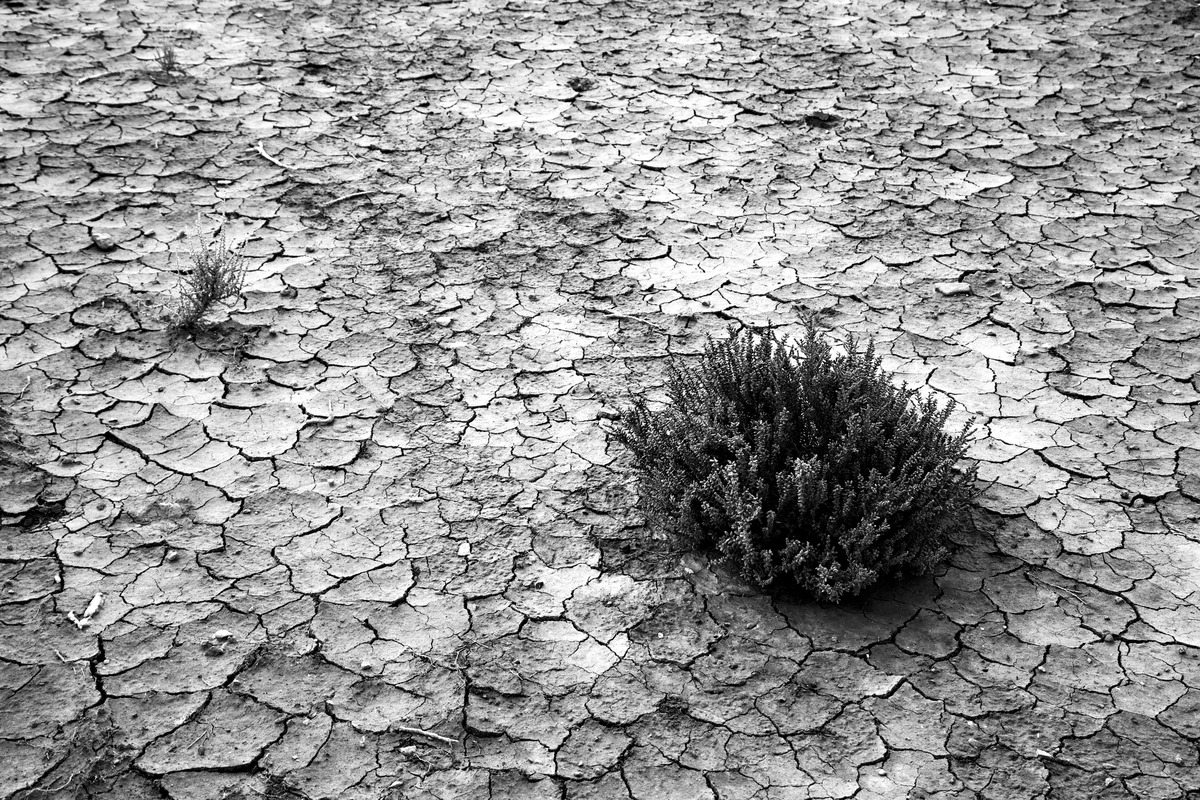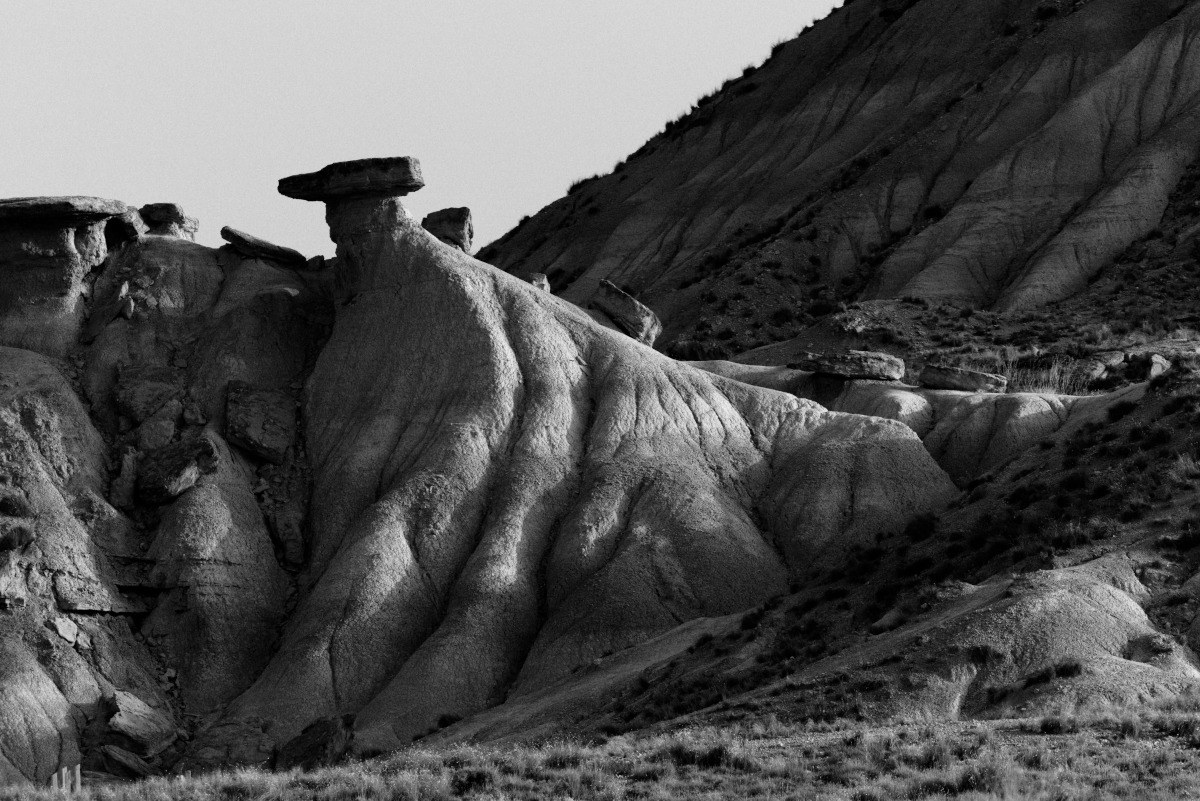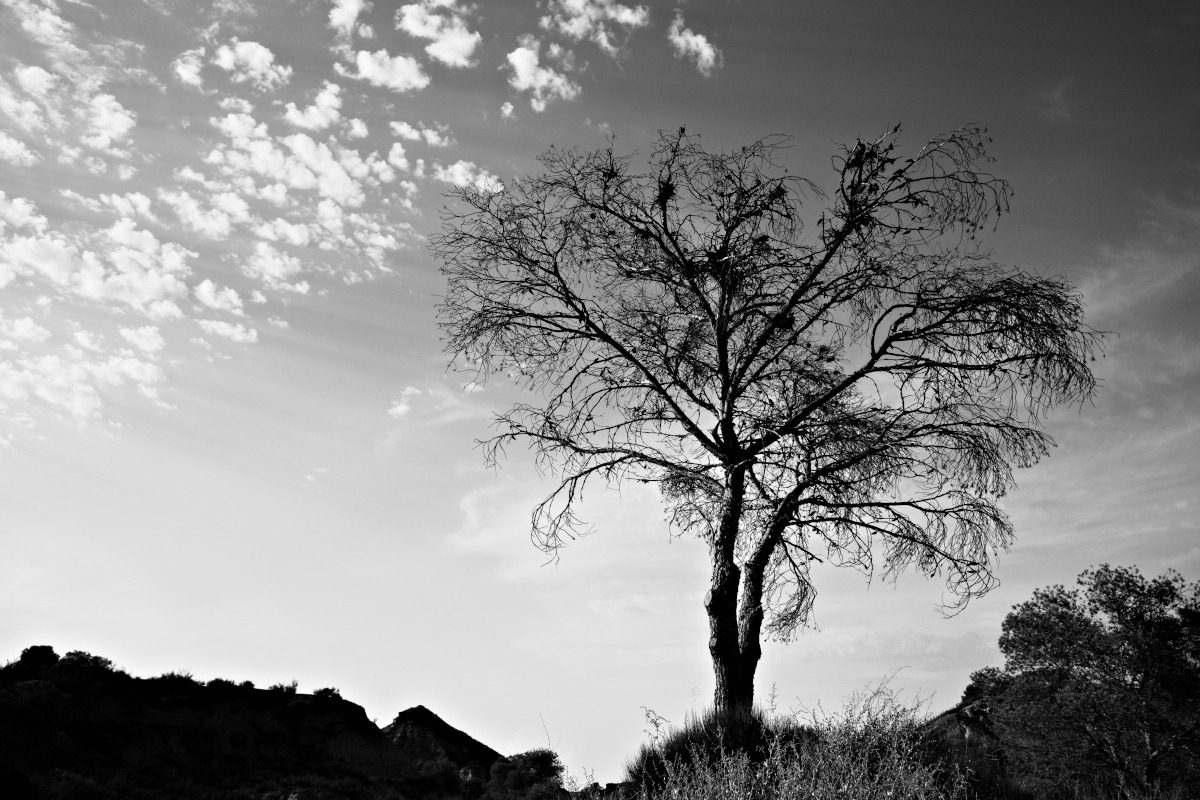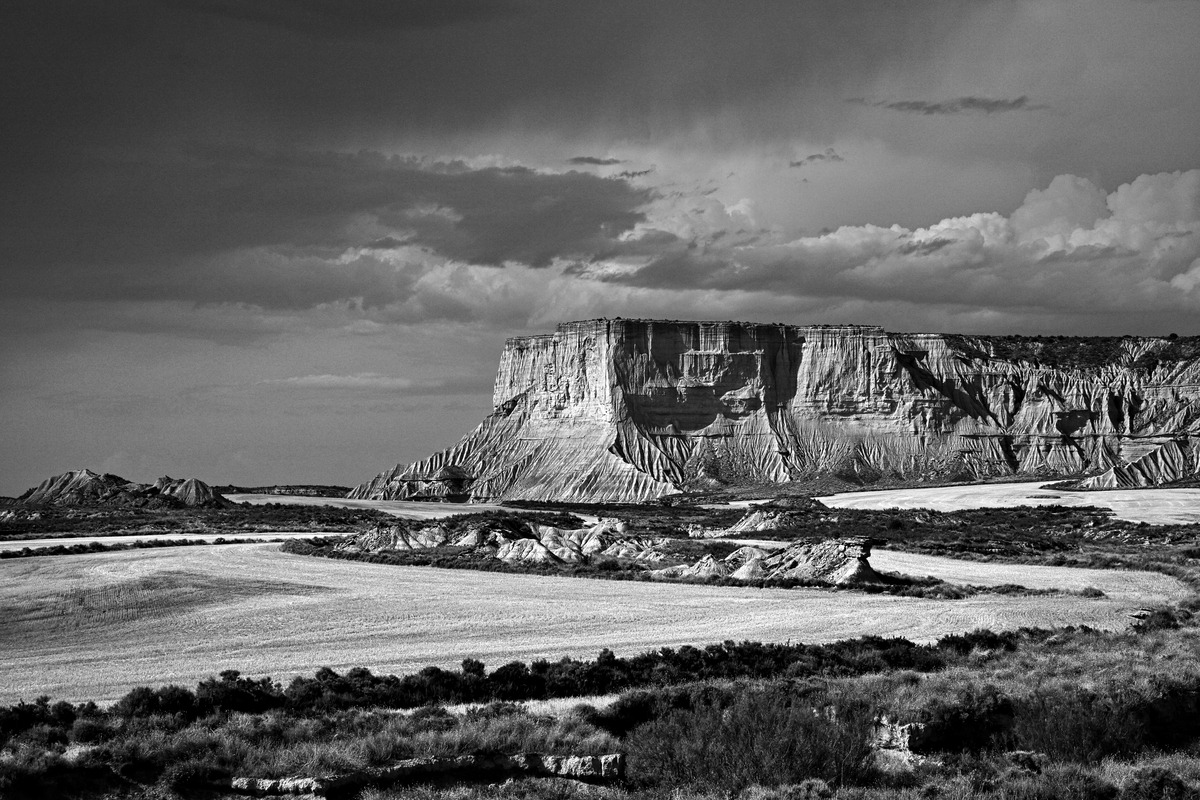Tierras Yermas
Short-term project
Status: Finished
Period: 2022-2023
Format: printed (in preparation)
Passing through Navarra (Spain) in 2018, I overheard that there was a “desert” nearby, but that its access was not very favorable for visitation. Few things fascinate me as much as the sea and, one of the few, are the deserts. These may seem like antitheses – the abundance and complete scarcity of water – but for humans, salt water is also a desert. And that’s why they intrigue me, attract me and have my respect.
At that time I was not able to visit that desert in Navarra, but I never stopped thinking about it. Back in Spain only four years later, I had already done enough research to be sure that I would go there at the first opportunity: to the “desert” of Bardenas Reales. In my research, I discovered that it was not a desert, but badlands, which did not diminish its charm. And, thanks to that, I also discovered other badland regions in the Iberian Peninsula, with the same geological and landscape characteristics, that are now also part of this project.
The main feature of these badlands landscapes is the high concentration of canyons, gorges, ravines, channels and fairy chimneys, that is, rock columns with a more solid layer on their peaks that protects the entire column from erosion. This rugged topography occurs on all continents, except Antarctica, and is formed over thousands or millions of years by a combination of three main factors: scarce but intense rainfall; little vegetation cover due to the arid or semi-arid climate, and; soil impermeable on the surface but fragile and easily eroded by water.
Seeing all this eroded terrain, I can’t stop thinking about what the Caatinga, the Cerrado, the Amazon or the Pampas will be like if all the agricultural pressure intensifies the loss of soil and, in some cases, triggers more intense processes of desertification. The beauty of the so-called badlands lies in the fact that they are natural, as are the southern fields Pampas, the
Caatinga white forest, the savannas and rain forests.
However, the “formula” for the creation of badlands is being gradually applied to the letter in several regions of Brazil, where the soils are naturally fragile, but the climate was mild and the vegetation exuberant. The combination of climate change and deforestation in Brazil could result in barren landscapes in the coming decades – truly tierras yermas, like the ones pictured here, taking the place of the most biodiverse ecosystems in the world.
This project does not intend to be a snapshot of the present, nor that in the future it will function as a documental memory of the past. But the purpose of this essay is to be a portrait of an arid and desert future that is getting closer and closer at the current pace of destruction of ecosystems.
La tierra yerma, sin árbol
ni montaña, el cielo seco,
huérfano de nube o pájaro;
tan quietos los dos, tan solos,
frente a frente tierra y cielo,
paralelismo de espejos,
que ahora no hay lejos ni cerca,
alto o bajo, mucho o poco,
en el universo,
¡Dulce muerte de medidas,
guiño de infinito!
Pero de un surco se vuelaun pájaro primerizo.
Y todo vuelve a ordenarse
por la pauta de su sino.
Ya la tierra está aquí abajo
y el cielo allí arriba puesto,
ya la llanura es inmensa
y el caminante pequeño.
Y ya sé lo que está lejos:
dicha, gracia, paz o logro.
Y ya sé lo que esta cerca:
el corazón en el pecho.
Pedro Salinas, 1923

LensCulture review
[…]
Within their beauty and visual poetry, the pictures do express a deep concern about these lands. There is a sense of personal involvement in the work that causes the audience to want to follow you on this journey.
On a technical level, it appears that you know well what to do with the monochrome format in order to bring that distinct aesthetic to the edge without becoming overwhelmingly dramatic. Shadows and highlights in your images are not just visual qualities of light; are narrative devices that allow the visual forms to obtain content and meaning. The lack of color also defines the approach taking it away from the literal depiction and documentation of the subject without cutting the bond with reality. The monochrome format, as you have treated it, suggests a poetic interpretation of the land you investigate, a kind of memorialization like Ansel Adams once did for Yosemite national park. It is not that you present these mountains as monuments but the distinct gestures and textures create a sense of importance and emergency about the future of this place.
[…]


